Wikipedia:Wikipedia Signpost/2009-01-24/Dispatches
Dispatches: Reviewing featured picture candidates
What is a featured picture?
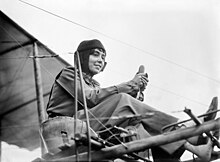
Featured pictures (FP) are "images that the Wikipedia community finds beautiful, stunning, impressive, and/or informative". There are currently about 1,500 Featured pictures; one featured picture is highlighted as the picture of the day on Wikipedia's Main Page.
Featured picture candidates (FPC) selects images that illustrate a subject in a compelling and informative way. FPs must be of the highest technical quality possible. Taking the adage that "a picture is worth a thousand words", featured images should illustrate a Wikipedia article in such a way as to add significantly to that article, according to the Featured picture criteria. They should either illustrate the content particularly well or possess an eye-catching quality that prompts viewers to read the accompanying article. This dispatch will explain the FP criteria so you will be able to review candidate pictures and participate in the review discussions.
Featured pictures must meet eight criteria:
- 1) High technical standard – Featured pictures meet a professional standard of quality, though exceptions are made for historic images. A featured photograph clearly shows the subject, without any blurring or compression artifacts. The composition does not distract the viewer from the subject. Similar standards are applied to non-photographic works; for instance a painting or engraving must be competently reproduced, and a diagram must be accurate and illustrate the subject well.
- 2) High resolution – While, again, exceptions are made for historically important images, a picture's resolution should be high enough to allow print reproductions. The minimum is 1,000 pixels on the smallest side.
- 3) Among Wikipedia's best work – They illustrate their articles unusually well, and noticeably surpass other pictures in quality and encyclopedic value.
- 4) Freely licensed – All Featured pictures must either be in the public domain or freely licensed. No images with a "fair use" justification are accepted. Information supporting the license must therefore be provided on the image description page. (See related stories: Reviewing free images and Reviewing non-free images.)
- 5) Adds value to an article – Featured pictures increase readers' understanding of one or more articles. In this process, encyclopedic value is given priority over artistic value.
- 6) Accurate – Featured pictures do not promote original research. They are supported by facts in their articles, references cited on the image description pages, or the reliability of their sources.
- 7) Good caption – Featured pictures have an informative and succinct caption, which identifies its subject and context.
- 8) Avoids inappropriate digital manipulation – Limited digital manipulation that aims to correct flaws is acceptable, but any alteration which causes the main subject to be misrepresented is not.
Promotion process
The Featured picture candidates (FPC) page lists the current nominations. Each nomination contains a small version of the nominated picture, the nominator's reason it should be a FP, a list of articles in which the image appears, and an acknowledgement of the original creator of the image. Reviewers discuss whether the image meets the criteria. Reviewers are expected to evaluate the highest resolution version of the image before commenting on a nomination. All objections should be accompanied by a specific rationale that, if addressed, would make the opposer support the image.
After seven days, if an image is supported by four or more reviewers and the consensus is in its favor, it can be promoted. The opinions of anonymous and new users are generally not disregarded, however they are given little weight in the final outcome. Opinions added early in the process may be discounted if they do not address concerns that arise later in the debate. Therefore, reviewers should monitor the progress of nominations on which they have voiced an opinion.
Reviewing FPCs

Reviewing images against the Featured picture criteria can seem overwhelming, but most of it is common sense, and there are more experienced people there; an individual reviewer isn't expected to spot every problem. Pay attention to others' comments on the Featured picture candidates pages. Reading other reviewers' responses to images, and looking at the problems they point out, is a good way to improve your ability to review candidates.
This is only a rough guide to reviewing FPCs, omitting some of the finer points, more subjective matters like composition, and photography jargon.
Resolution
The size of the image is one of the more hard-and-fast rules on featured pictures. On the image description page, you will see a line under the image that says something similar to "Full resolution (1,944 × 1,296 pixels, file size: 1.49 MB, MIME type: image/jpeg)", which describes the size and file type of the image. Still images should have a minimum of 1,000 pixels along their shortest edge, though larger images are preferred. Exceptions are made rarely for this. Panoramas need substantially more than 1,000 pixels in the longer dimension so sufficient details can be seen.
However, vector images in SVG format can be arbitrarily resized without losing quality, therefore the resolution criterion is inapplicable. The 1,000 pixel limit also does not apply to animations and videos, but they should be as large as practically possible. That said, each image should be judged on its own merits. Some subjects, such as paintings, demand a higher resolution than the minimum requirements. As a reviewer, you must ask: is the image resolution sufficient to show the important details?
Examples (view these at full resolution):
 |
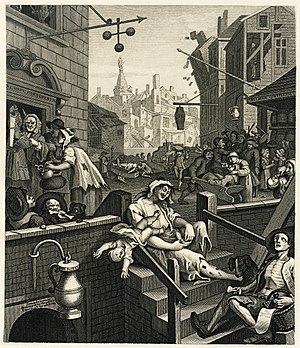 |
Accuracy
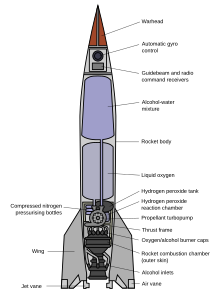
Criterion 6—accuracy—is particularly important for nominations of diagrams. The content should be verifiable and not promulgate fringe theories or original research. The sources should be listed on the image page, in the caption, or in the part of an article where the image is explained. For example, the diagram of the V-2 rocket to the right references v2rocket.com on the image description page.
Encyclopedic value

All FPs must be included in at least one article. You can see which articles link to the image in the "File links" section of the image description page. The image should contribute strongly to the article, that is, you should be able to easily justify its presence in the article. An image shown only in a gallery is not considered to have encyclopedic value (EV). An image gains more EV by contributing strongly to a single article rather than contributing weakly to many. For this reason, adding an image to numerous articles to demonstrate EV is counterproductive and may annoy both FP reviewers and article editors.
For an example of the role of this criterion in featured picture nominations, consider the image to the left. In this FPC discussion, reviewers argued that the image did not specifically illustrate a person from the Central African Republic, the article in which the image was placed. One reviewer suggested, "This boy could be anywhere and from anywhere, therefore this photo is not very encyclopedic for any place. If we could figure out what ethnic group he belongs to, we could add him to the Demographics of the Central African Republic or to one of the sub-pages. If we had an article on the destruction of Birao, we could even add it there." In the end, the image was not promoted.
Licensing and image descriptions
For help understanding the proper licensing of free images and spotting copyright violations, see this dispatch. In short, if a nominated image violates a copyright or does not provide clear licensing and copyright information, you should vote delete on the nomination, clearly stating the reason.
The image description page should also provide enough information to put the image in context. It should include what and who the image shows (in as much detail as is appropriate), when it was created, who made the image (if known), and other relevant information. A scan of a photo or drawing from a book should state which book it came from, and ideally full bibliographic information for it.
Images should also have a caption, which appears on their featured picture candidate page; however, this is just a brief description of the subject to explain to reviewers what the image is, and to make it clear that it has value to the encyclopedia.
Image quality
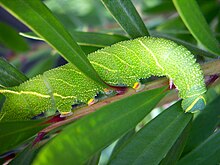
A full description of some of the technical aspects of image quality will have to wait until a future dispatch, but an explanation of the basics should be enough to get you started reviewing.
In short, a featured picture should not have obvious problems, with some exceptions. Very old photos might be a bit more blurry because the photography equipment of the time was less capable. Likewise, a 15th century painting might have gathered some damage in the six centuries since it was painted, but we can overlook that if the painting itself is interesting or important.

Here are some general rules:
- The picture should not cut off important parts of the subject without reason. A photo of an animal resting inside its den, taken from the outside, or a photo of one component of a complicated machine would be fine. A portrait with part of the head cut off would probably be unacceptable. A partial scan or an incomplete reproduction would also fail this criterion.
- The picture should be sharp. All important parts of the subject should be in-focus and clear, as much as possible. However, it is acceptable for distracting elements in the background to be blurred.
- The image should be neither too bright and washed out (over-exposed), nor too dark and shadowy (under-exposed).
- The background should not distract the viewer in a way that makes it hard to focus on the main subject.
- Unintentional lens distortion—which turns straight lines into curves—should not be noticeable.
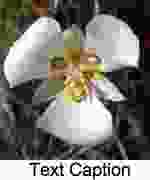
A somewhat exaggerated example of JPEG artifacts, a common problem - When looking at the image at full resolution, do you see static-like noise in the darker areas? JPEG artifacts (see example)? Rainbow-like fringes around bright objects? Does the image appear to be made up of tiny dots? Any of these problems can disqualify an image.
- The image should not be so small that important details are missing.
- Finally, a subjective judgement: Is the image boring? An image can shock, horrify, interest, or enlighten, and any of these might add to our ability to understand an article. However, if it elicits no reaction at all, then it is worth considering again if it is really our best work. There may be exceptions to this where something not particularly interesting to look at is nonetheless obviously important. For example, this featured picture is just a rather faded, hand-written document. It is also the first page of the original copy of the United States Constitution, reproduced superbly. Most reviewers agreed that this image was important enough to justify featuring.
What makes a featured image?
These are considered to be among Wikipedia's best photos; various aspects increase their encyclopedic value, the first one being time lapse photography which is well suited for illustrating processes far more effectively than a single static image:
Pictures also benefit from a conveniently located person or some other object to provide a sense of scale, particularly if the subject is known for being big or small.
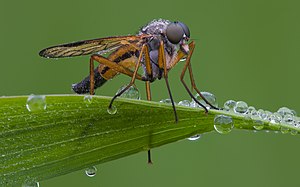 |
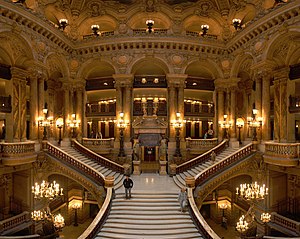 |
Pictures which illustrate a particular adaptation of a species, functionality of a machine or people doing their jobs also gain encyclopedic value.
 |
 |
It also helps if the image is hard or impossible to replace or depicts some valuable historic moment. This includes unusual subjects and images that counter systematic bias, whether caused by copyright problems (as discussed above) or a lack of good Wikipedian photographers in the area. The importance and rareness of an image may mitigate otherwise poor quality.




Discuss this story
This wasn't discussed at WT:FCDW, and we're still working out whether there is going to be WP:FCDW/December DYK contest. We can probably run this (if its finished) on December 8 unless the DYK contest materializes. Please coordinate at WT:FCDW so we don't have these last minute surprises: it was listed at the Newsroom even though it's not yet ready. SandyGeorgia (Talk) 07:17, 5 December 2008 (UTC)[reply]
Non-photographic media
This article contains no examples of engravings, lithographs, diagrams, paintings, documents, and all the other types of featured pictures. At a minimum, I'd throw in a Lady of Hats diagram, an engraving, and one of Durova's document restorations - possibly the Islamic calligraphy. Shoemaker's Holiday (talk) 13:30, 9 January 2009 (UTC)[reply]I threw in a few things to try and show the variety of FPs a bit better. IT's now more about images, less about text. It might be a little over-illustrated, actually. Shoemaker's Holiday (talk) 15:20, 9 January 2009 (UTC)[reply]
Deleted material
This is far, far too detailed. I'll do a brief summary instead. This should probably form part of a dispatch in its own right. Shoemaker's Holiday (talk) 17:13, 9 January 2009 (UTC)[reply]
Now comes the interesting bit—assessing the technical quality (criteria 1, 3 and 8). Use a raster image editing program such as The Gimp to assess photographs. A vector graphics program may be more appropriate for diagrams. Before you get started, you should calibrate your monitor by following the directions at "Is my monitor calibrated correctly?"
Download the full-resolution image to your hard drive and open it up with your image editor. Now start checking for problems:
Zoom in so that the picture is now at 100%.
Also, check scans for several additional problems. A bad reproduction can scupper an otherwise feature-worthy image.
For a general idea of what we are looking for, see Commons:Image guidelines. Here are some example reviews.
This example was cropped to reduce upload size.
This one is probably not useful, and criticises an actual nominator.
Final FP gallery
The gallery at the end seems a little gratuitous to me. Do all the images in the gallery have a reason for being there? Will they help readers understand how to review candidates? Wronkiew (talk) 07:44, 10 January 2009 (UTC)[reply]
Deleted gallery
I removed the following section from the dispatch to reduce the length. Wronkiew (talk) 05:23, 12 January 2009 (UTC)[reply]
Any type! While this Dispatch mainly concentrated on photography, here's a sample of some of the slightly more unusual images that have been promoted to featured picture status.
Dispatch ready
I have finished proofreading the dispatch, and I think it's ready to go. I'm a little uncomfortable about leaving people hanging at the end. However, from reading the other dispatches it seems they also omit a conclusion.. Wronkiew (talk) 02:19, 21 January 2009 (UTC)[reply]
Hogarth
The FP version of Gin Lane is not Hogarth's work from "Davenport's edition", but a later copy engraved by Davenport (probably around 1806-09 for Trusler's Hogarth Moralized). Sorry to jump in at the last minute (assuming it hasn't been used yet), but comparing the two as if they are both Hogarth originals doesn't strike me as a good idea. The first image isn't a good quality scan admittedly but it is from Hogarth's original plates. Yomanganitalk 20:44, 22 January 2009 (UTC)[reply]